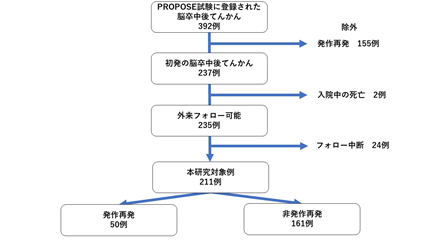2022-05-06 ペンシルベニア州立大学(PennState)

A Penn State College of Medicine researcher and colleagues found that a treatment for retinal vein occlusion — one of the most common blinding conditions in the United States — may lead to long-term vision improvement. Credit: Penn State College of Medicine / Penn State. Creative Commons
重篤な網膜中心静脈閉塞症は、治療を行わない場合、しばしば重大かつ永続的な視力低下を引き起こします。この病気は、目の奥にある光に敏感な組織である網膜から血液を運ぶ静脈を閉塞させる可能性がある。これにより、網膜の内側や下に液体がたまって黄斑浮腫が発生し、視力が急速に低下します。
抗血管内皮増殖因子製剤(抗VEGF製剤)の注射は、網膜の血管漏れや腫れを抑制する効果があり、最も有効な治療法と考えられています。
研究チームは参加者を5年間追跡調査し、視力、治療、黄斑浮腫の消失の有無に関する情報を収集しました。12ヶ月目までプロトコールに従った治療を受けた患者のVALSは大幅に改善したが、治験責任医師の裁量で治療が行われ、治療回数が減少すると改善は減少したが、5年目までベースラインより顕著に改善されたままだった。
ほとんどの患者は5年目も治療を継続した。このことから、CRVOやHRVOに伴う黄斑浮腫の患者さんには、継続的なモニタリングと、必要に応じて抗VEGF療法による治療が有効であることが示唆されました。
<関連情報>
- https://www.psu.edu/news/research/story/treatment-blinding-blood-vessel-condition-yields-lasting-vision-improvement/
- https://www.ajo.com/article/S0002-9394(22)00144-1/fulltext#%20
中心静脈閉塞症または半網膜静脈閉塞症による黄斑浮腫に対する抗VEGF療法の治療開始後60ヶ月目の転帰について Month 60 Outcomes after Treatment Initiation with Anti-VEGF Therapy for Macular Edema due to Central or Hemi-Retinal Vein Occlusion
Ingrid U. Scott, Paul C. VanVeldhuisen, Neal L. Oden, Michael S. Ip, Barbara A. Blodi, for theSCORE2 Investigator Group
American Journal of Ophthalmology Published:April 21, 2022
DOI:https://doi.org/10.1016/j.ajo.2022.04.001
Abstract
Purpose: To investigate 5-year outcomes in eyes initially treated with aflibercept or bevacizumab for macular edema due to central retinal (CRVO) or hemiretinal vein occlusion (HRVO).
Methods: Long-term follow-up (LTF) after a randomized clinical trial from sixty-four centers in the United States. Participants followed up to 60 Months and treated at investigator discretion after completing the 12-month treatment protocol. Main outcomes are visual acuity letter score (VALS) and central subfield thickness (CST) on optical coherence tomography.
Results: Seventy-five percent (248/330) of eligible participants completed at least one visit between Months 24 and 60, and 45% completed the Month 60 visit. Among participants completing Month 60, overall mean VALS improvement over baseline was 13.5 (95% CI: 9.6, 17.5), less than the mean improvement of 20.6 (95% CI: 18.7, 22.4) observed at Month 12, with no significant differences between originally assigned study groups. Further, 66% (99/150) had at least one treatment between Months 48 and 60 with a mean (SD) of 3.41 (3.69) treatments over this period. Mean CST was 671 microns at baseline and 261 microns (95% CI: 241.2, 280.9) at Month 60.
Conclusions: While VALS improved substantially when patients were treated per protocol through Month 12, improvement lessened when treatment was at investigator discretion and fewer treatments were received although VALS remained markedly improved over baseline through Year 5. Most patients continued to receive treatment in Year 5. This suggests that continued monitoring and, if warranted, treatment with anti-VEGF therapy, benefits patients with macular edema associated with CRVO or HRVO.


